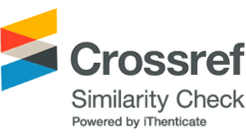Abstract
References
Information
MPSG (Manitoba Pulse & Soybean Growers). 2016. The bean report - May 13, 2016. http://www.manitobapulse.ca/production/the-bean-report/ (Accessed on September 2, 2020).
RDA (Rural Development Administration). 2009. National Institute of Crop Science, Crop Information Center. Available from http://crop.nics.go.kr/accessed.
Song, B.N., D.B. Lee, S.H. Lee, B.R. Park, J.H. Choi, Y.S. Kim and S.Y. Park. 2020. Physicochemical properties and antioxidant activity of extract from Astragalus membranaceus Bunge leaf fermented with lactic acid bacteria. Korean J. Med. Crop Sci. 28(6):428-434 (in Korean).
10.7783/KJMCS.2020.28.6.428
Tkachuk. 2019. Influence of genetics, environment and Management https://www.manitobapulse.ca/wp-content/uploads/2019/06/The-Bean-Report_June.2019.pdf (Accessed on June 8, 2020).
- Publisher :The Plant Resources Society of Korea
- Publisher(Ko) :한국자원식물학회
- Journal Title :Korean Journal of Plant Resources
- Journal Title(Ko) :한국자원식물학회지
- Volume : 37
- No :1
- Pages :71-78
- Received Date : 2023-09-06
- Revised Date : 2023-11-02
- Accepted Date : 2023-11-07
- DOI :https://doi.org/10.7732/kjpr.2024.37.1.071




 Korean Journal of Plant Resources
Korean Journal of Plant Resources







